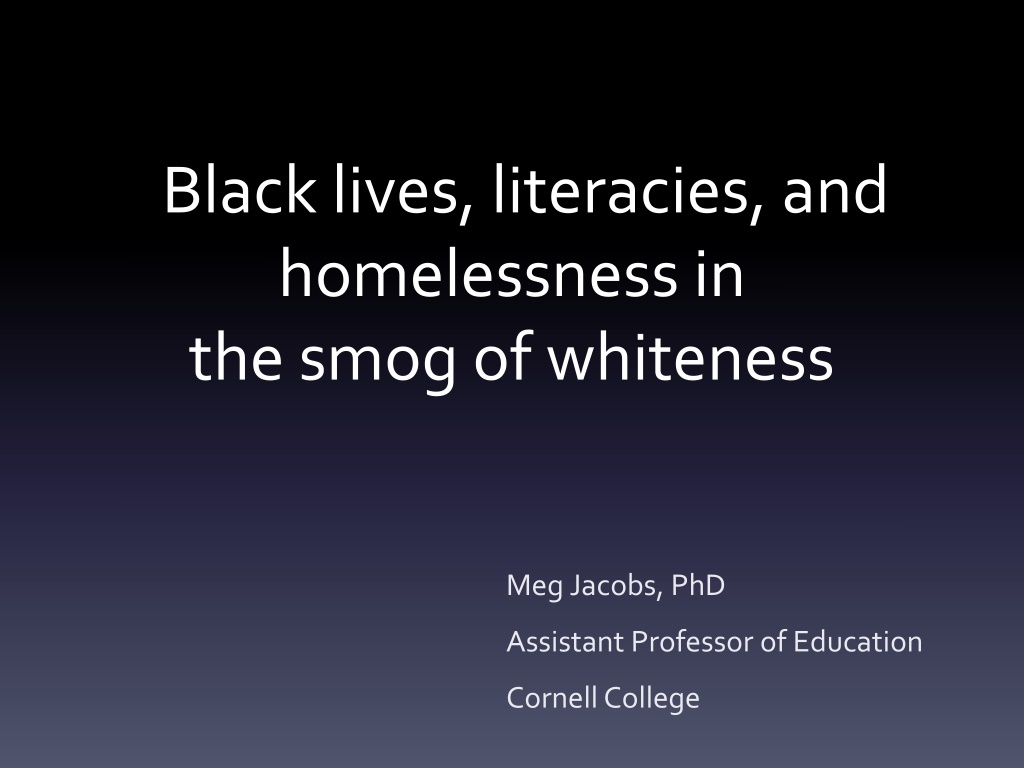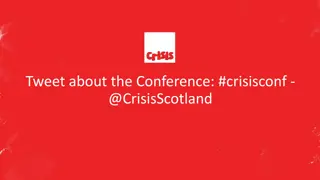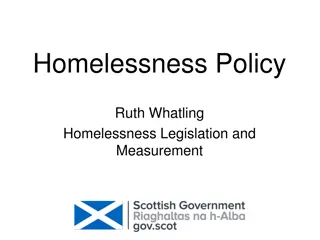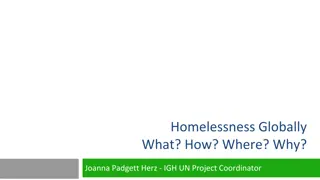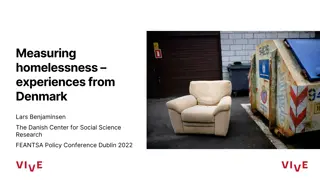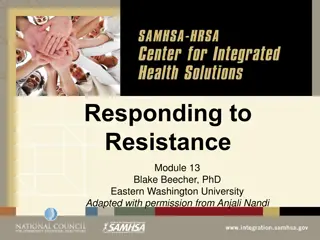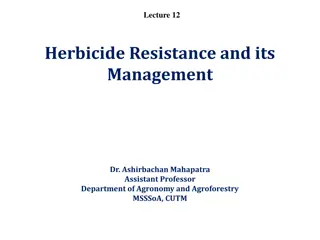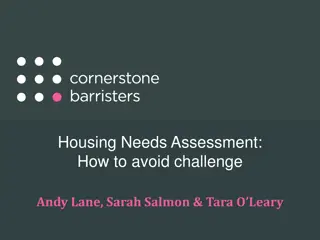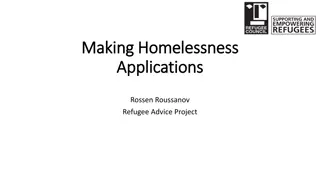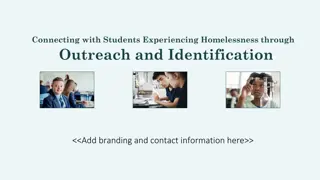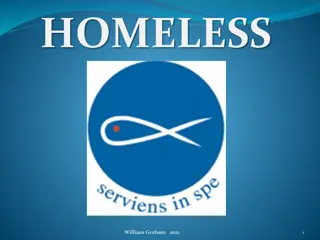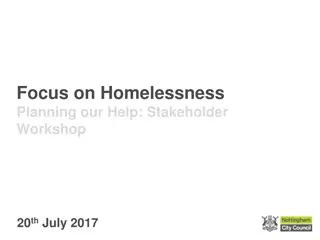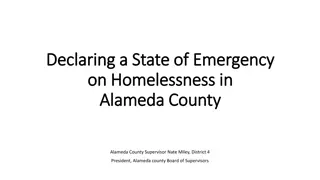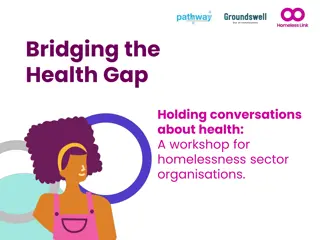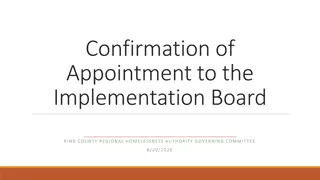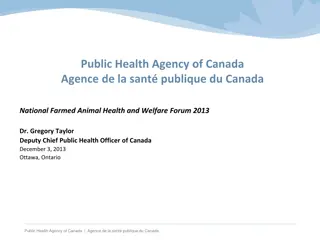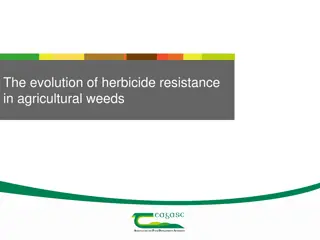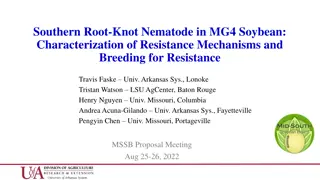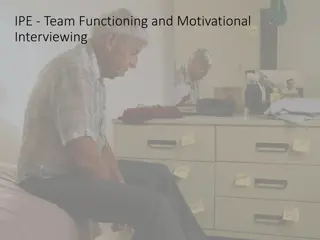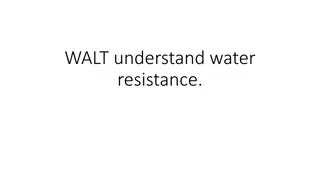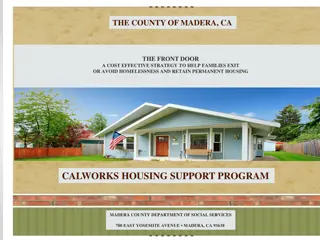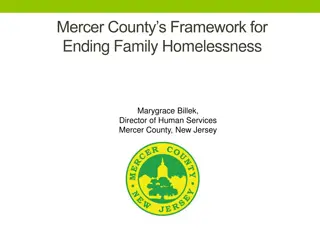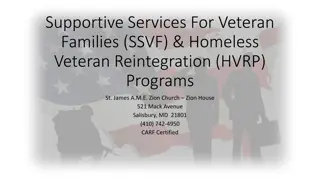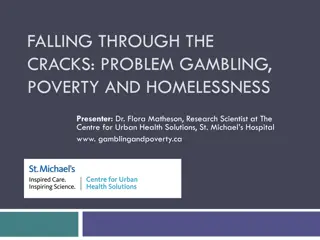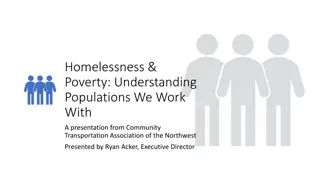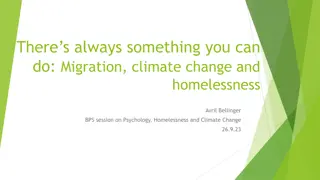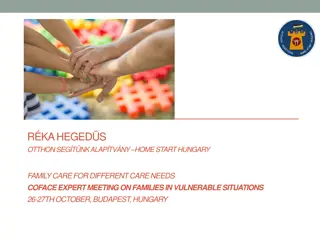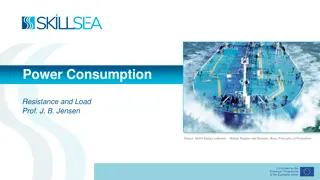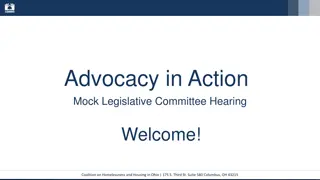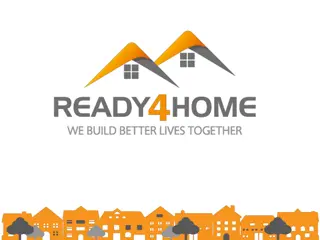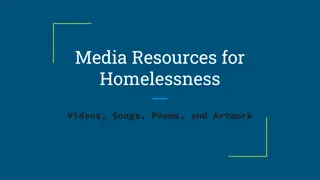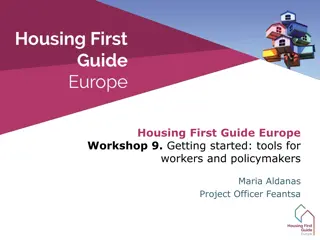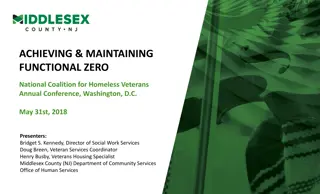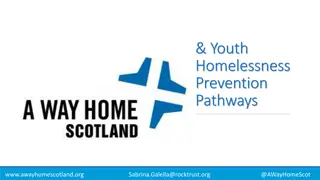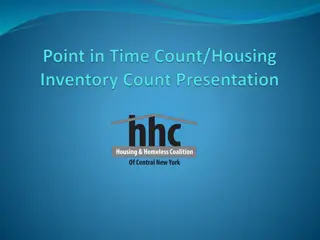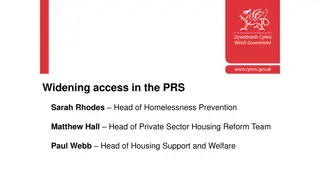Literacies, Stories, and Resistance: Unveiling the Impact of Homelessness on Families
Explore the intricate world of literacy practices, storytelling, and resistance in families experiencing homelessness, delving into the narratives of parents and children as they navigate through shelter life. Discover how personal histories shape beliefs and attitudes towards the future, challenging dominant deficit perspectives and cultural racism.
Download Presentation

Please find below an Image/Link to download the presentation.
The content on the website is provided AS IS for your information and personal use only. It may not be sold, licensed, or shared on other websites without obtaining consent from the author. Download presentation by click this link. If you encounter any issues during the download, it is possible that the publisher has removed the file from their server.
E N D
Presentation Transcript
Black lives, literacies, and homelessness in the smog of whiteness Meg Jacobs, PhD Assistant Professor of Education Cornell College
Study Context 70 bed transitional shelter in a small midwestern city with a university at its center College Town 5 families, 6 parents, 12 children Self-identified as Black, African American, Puerto Rican Moved to the shelter from Chicago and Gary, IN inner city neighborhoods Voluntary participation in an art and story hour once per week at the shelter
Research Questions What literacy practices do families engage in while experiencing homelessness? What stories do families tell about their experiences transitioning in and out of the shelter? How have the parents particular life, literacy, and schooling histories shaped their beliefs and attitudes toward their children s and their own futures?
Counterportraits Counterportraits (Meyer, 2010) The problem of speaking for others (Alcoff, 1991 ) It s not a secret. It s a testimony. It s a story. It s going to help somebody else. -Melody
Dialogical Narrative Analysis (Frank, 2012) Quest Narrative unfinalized lives Assimilation Narrative the myth of the American Dream; school sanctioned literacy practices Resistance Narrative response to deficit perspectives
Resistance Narrative Resistance to deficit perspectives suggested at school about children (Jacobs, 2014) Resistance to dominant deficit perspectives self-defeating narratives that recreate the conditions of oppression (Solorzano & Bernal, 2001)
The smog of whiteness Cultural racism the cultural images and messages that affirm the assumed superiority of whites and the assumed inferiority of people of color is like smog in the air. Sometimes it is so thick it is visible, other times it is less apparent, but always, day in and day out, we are breathing it in (Tatum, 1997).
The smog of whiteness How do you see the smog of whiteness enacted in the following excerpts?
Melody Mother of two sons, Martez (11) Dylen (4), and a daughter, Alex (9); self-identified as African-American Left Chicago to save her sons from falling to the streets and for a better neighborhood with better schools Following is Melody s perspective on school s evaluation of her youngest son s language development
Melody: I need to look into his speech. Meg: You have to what? Melody: His speech. They kept saying in pre-K that it should get better. Meg: You're worried about it? Melody: Yes, because certain letters he can't pronounce it right. I don't know what it is, but it's having an effect on putting letters to make a word, even with his alphabet, when he says his alphabet, even certain letters he says different. Melody: So when you try...for a long time...what is it? Like, now we've been working on BAT. Dylen: BAT. Melody: And he wasn't saying the T. He was saying BA.
Sandy Mother of three daughters: Brittany (13), Julien (11), and Brianna (9); one son not with her at the shelter; self-identified as Black Experienced chronic homelessness due to job loss and lack of affordable housing in Chicago Following are Sandy s perspectives on College Town
Sandy: I just like it because it's diverse. Meg: Say more about that. What do you think? Sandy: It's cool. I see more Caucasians. Meg: Ok. Than you did in the neighborhood where you came from? Sandy: Yes. Meg: And that's a positive for you? Sandy: Mhm. Meg: Can you say why? Sandy: Because my kids...they always say I want to be around the Caucasian people, you know. Meg: And do they say why?
Sandy: They say they're more better than the Black people. Meg: And what do you say to that? Sandy: Well, uh...I don't know. I don't know. I don't know. But my son he said it all the time, "I want to be around the...the White people. I want to hang with them because they're more fun and they don't be on bad things trying to gang bang and stuff like that.
Meg: Um, when, as a mom, and hearing your kids say that, does that make you sad? Does that make you- Sandy: -No, not at all. Meg: So what...do you think it has to do with- Sandy: -Probably the neighborhood that we grew up in, you know, all the stuff that they seen, and people getting hurt, is always Black on Black, you know.
The classroom was a jail of other people s interests (Coates, p.48) Intersectionality of race with other forms of subordination (Gillborn, 2015) Culturally sustaining pedagogy - children learn to question rather than internalize narratives of white supremacy in school (Paris, 2012) cultural wealth of Communities of Color (Yosso, 2005) Sense of urgency for white educators - work to be accomplices to dismantle the structures of white supremacy
Alcoff, L. (1991-1992). The problem of speaking for others. Cultural Critique, (20), Winter 1991-1992, 5-32. Brandt, D. (2001). Literacy in American lives. New York: Cambridge University Press. Coates, T. (2015). Between the world and me. New York: Spiegel & Grau. Frank, A. W. (2012). Practicing dialogical narrative analysis. In J. A. Holstein and J. F. Gubrium (Eds.), Varieties of narrative analysis (pp. 33-52). Los Angeles, CA: Sage. Gillborn, D. (2015). Intersectionality, Critical race theory, and the primacy of racism: Race, class, gender, and disability in education. Qualitative Inquiry, 21(3), 277-287. Jacobs, M. (2014). Literacy, education, and inequality: Assimilation and resistance narratives from families residing at a homeless shelter. Critical Questions in Education, (5)3, 172-188. Lipman, P. (2011). The new political economy of urban education. New York: Routledge. Meyer, R. (2010). Official portraits and unofficial counterportraits of at risk students. New York: Routledge. Paris, D. (2012). Culturally sustaining pedagogy: A needed change in stance, terminology, and practice. Educational Researcher, 41(3), 93-97. Solorzano, & Bernal, D.D. (2001). Examining transformational resistance through a critical race and LatCrit framework: Chicana and Chicano students in an urban context. Urban Education 36(3), 308-342. Tatum, B. (1997). Wht are all the Black kids sitting together in the cafeteria: And other conversations about race. New York: Basic Books. Yosso, T. J. (2005). Whose culture has capital? A critical race theory discussion of community cultural wealth. Race Ethnicity and Education, 8(1), 69-91. DOI: 10.1080/1361332052000341006
